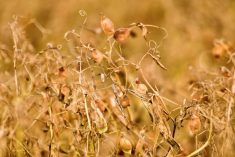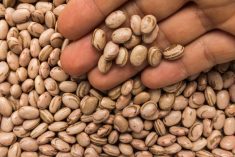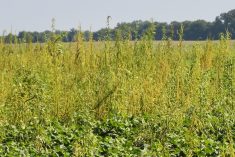Reuters — An invasive weed likely entered Minnesota through seed planted on land in a U.S. conservation program, state agriculture officials said on Thursday, bringing to a close an official probe of a growing threat to agricultural production.
Infestations of the weed, Palmer amaranth, have affected other states in the U.S. Midwest through seed planted on land in the federal Conservation Reserve Program, weed scientists have said. The program pays farmers to remove land from crop production to improve water quality, prevent soil erosion and protect endangered species.
Read Also

U.S. grains: Corn, soybeans higher in technical bounce; wheat firms
Chicago | Reuters – Chicago corn futures rose modestly on Thursday on chart-based buying, firm cash markets and reminders of…
Palmer amaranth, which is native to the Southwest, has spread across conservation land in Iowa, which accounts for nearly a fifth of U.S. corn production and in 2016 exported more than US$1 billion of corn and soy.
Infestations of Palmer amaranth, which can grow as much as two inches a day, spread over 30 plantings in the federal program in Minnesota, according to the state agriculture department.
Until now, Minnesota officials were unsure of how the aggressive weed entered the state.
“We’re pretty certain it came from the seed source just because there was no other pathway for the seed to have gotten there,” said Geir Friisoe, director of the state agriculture department’s plant protection division.
All infested Minnesota conservation plantings used seed from Cottonwood, Minn.-based Green Valley Seed, the department said in a statement. The investigation did not find Palmer amaranth in leftover seed that was not used.
Green Valley could not immediately be reached for comment.
The company was fined US$4,000 for violating the state seed law. One violation involved mislabeling seed from Texas, where Palmer amaranth is widespread, as being from Minnesota, according to the department.
The vicious weed was spread uniformly across the infested Minnesota fields, Friisoe said in an interview. Weed scientists have noted that is a clear sign that the source of Palmer amaranth was the seed.
Palmer amaranth is hard to kill and, if left unchecked, destroys as much as 91 per cent of corn on infested land, according to the U.S. Department of Agriculture. The weed has not yet spread into cropland in Minnesota, Friisoe said.
Under the state’s seed law, it is illegal to sell or transport seed mixes containing the Palmer amaranth seed.
Landowners face increased costs to control the weed.
Minnesota’s agriculture department will offer eradication services to help landowners eliminate the weed, Friisoe said, including testing suspect seed mixes.
— Reporting for Reuters by Renita D. Young and Tom Polansek in Chicago.
















